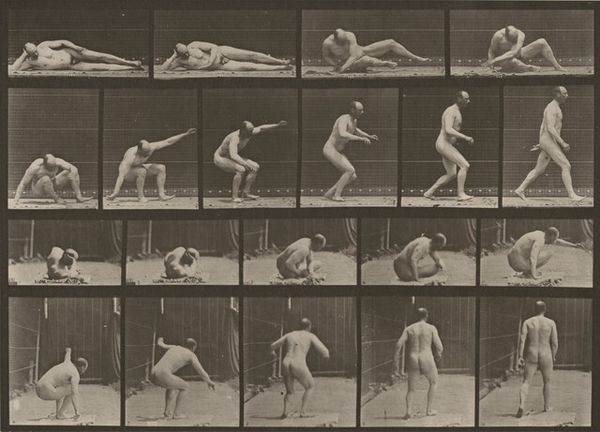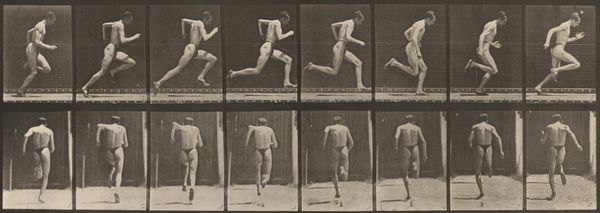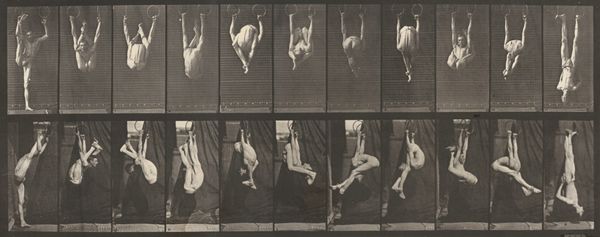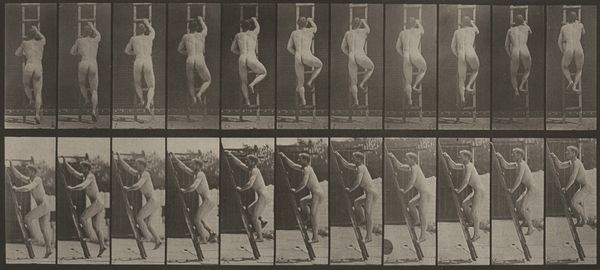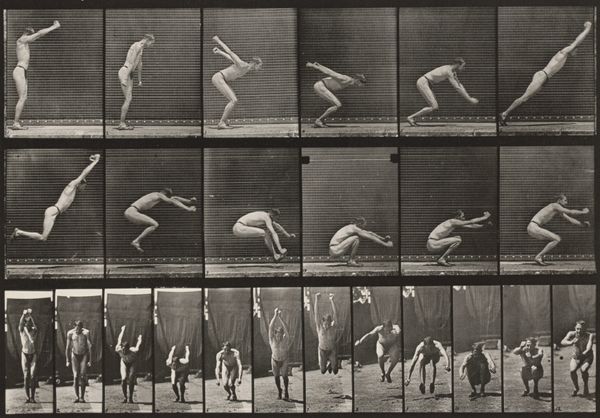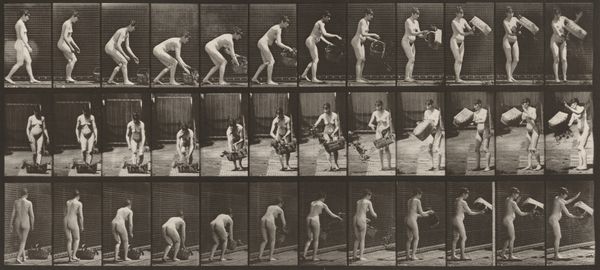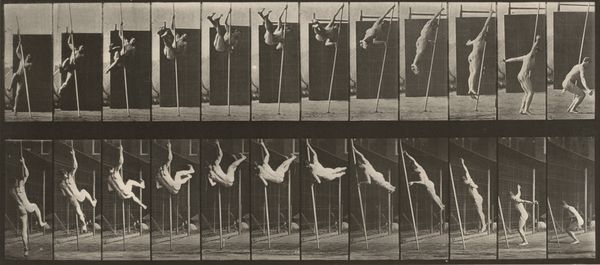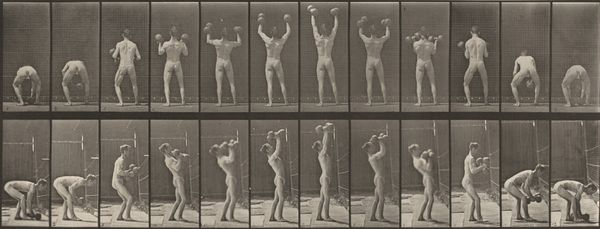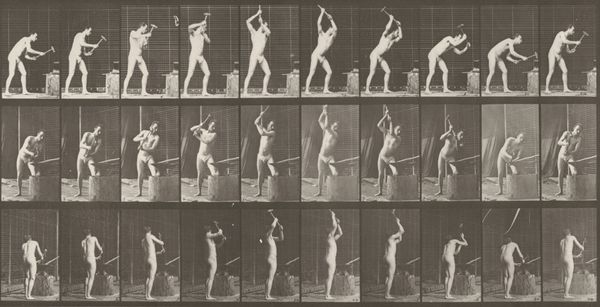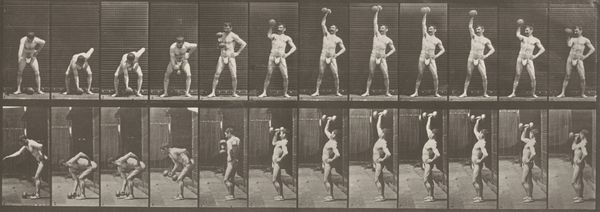
print, photography
# print
#
figuration
#
photography
#
nude
Dimensions: image: 18.1 × 38.95 cm (7 1/8 × 15 5/16 in.) sheet: 47.8 × 60.3 cm (18 13/16 × 23 3/4 in.)
Copyright: National Gallery of Art: CC0 1.0
Curator: Looking at this, I am struck by the geometric precision, almost a grid, documenting a human form in motion. Editor: That’s "Plate Number 373. Acrobat, 'press up' from chair" by Eadweard Muybridge, a print from his Animal Locomotion series, created in 1887. It's a landmark piece in the history of photography and visual culture. Curator: The repetition creates an intriguing rhythm. Is there perhaps some correlation between this plate and older diagrams of physical culture? This methodical, almost clinical, breakdown reminds me of manuals depicting exercise, and also reveals aspects of late-Victorian notions of athleticism and scientific observation of the body. Editor: That connection is insightful. Beyond its scientific function, the imagery is filled with symbol, echoing themes from art history—consider the age-old fascination with capturing ideal human forms, rendered anew via technological advancement. It’s more than just science; it's about our perpetual attempts to capture movement and the human spirit. The acrobatic motif too can't be accidental, speaking perhaps of man's ability to master not only his immediate world, but himself. Curator: And think about the reception in Muybridge’s time. It’s easy to imagine audiences fascinated, even unsettled, by seeing a body exposed so scientifically, divorced from any clear narrative purpose. Did this push against, or perhaps quietly subvert, contemporary understandings of both photography and propriety? Editor: Exactly. Muybridge’s approach opened new territory not just for photographic technique, but for examining how art, technology, and societal mores intertwine. I wonder, if in Muybridge's lifetime they could have seen how influential he would become to later generations interested in cinema? Curator: This has been fascinating; another view into how the historical gaze continues to find modern-day resonance within Muybridge’s still so innovative works. Editor: Indeed, viewing his compositions anew highlights aspects of Muybridge that demand reassessment. His plates remain rich texts—visually complex, and conceptually ever-expanding.
Comments
No comments
Be the first to comment and join the conversation on the ultimate creative platform.
